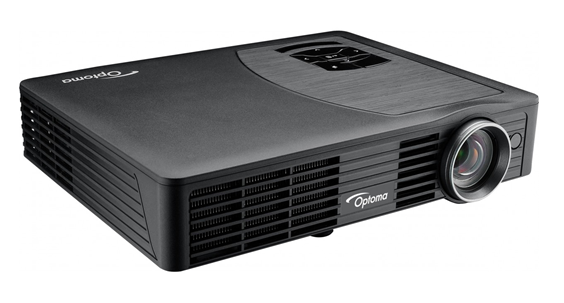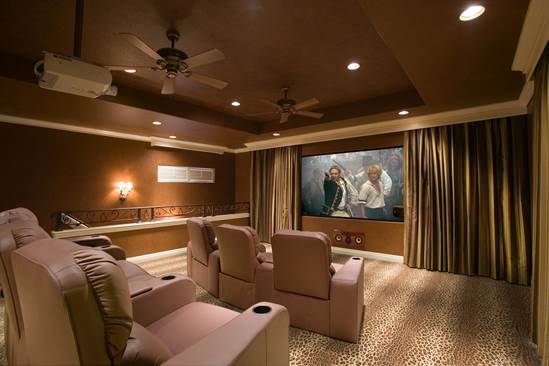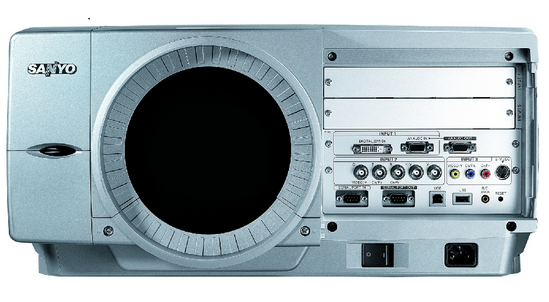Light fantastic
A projector’s ANSI lumens rating tell you
how bright it is. Home projectors are designed to be used in darkened
environments, so they don’t need to be massively bright as your eyes will
adjust to the image. Even so, most of the models here do a fair job under
bright light. This is handy if you want to use them during the day or keep
lights on in the background. A brightness of 1,200 lumens is fine for a dimly
lit room, 2,000 lumens is fine for office lighting and 3,000 lumens are still
visible in ambient daylight. However, ANSI lumen ratings can be misleading. An
efficient 1,000 lumens projector can appear almost as bright as an inefficient
2,000 lumens model. Our reviews tell you how good each projector is.

Optoma
ML500 DLP LED Projector
Projector bulbs have a rated lifespan,
after which they have to be replaced. Lifespans are increased by running a
projector in Eco mode, which reduces the brightness. We’d expect a projector
lamp to last at least 2,000 hours, while 4,000 hours or more is better.
However, it’s the cost per hour that's important, as this gives you a running
cost comparison for each model.
No place like home
Finding somewhere to place your projector
so that it’s correctly aligned with your projection surface can be a challenge.
All the projectors reviewed here allow you to flip and invert their images, so
you can mount them on the ceiling or back-project on to special screens.
The most important part of setting up a
projector is taking note of its throw ratio. This is vital in deciding how far
to place the projector from your projection surface. The ratio is defined as the
distance between the screen and the projector; divided by the width of the
image you’re trying to project. Projectors with short throw ratios can display
a larger image when close to the screen, whereas projectors with larger throw
ratios need to be placed much further away to get the best image.

The
most important part is taking note of its throw ratio
Keystone correction is another common
feature. Key stoning is when an image is wider at either the top or bottom, and
occurs if the projector is too high or low for the screen. Keystone correction
narrows the top or bottom of the screen to correct this, but it does so
digitally, so you lose image quality. Several of the larger projectors here
have lens shift, which allows you to change the position of the lens. This lets
you correct for a projector that is too low, high or off-center without
degrading the picture quality.
Third dimension
The latest and greatest feature for home
cinema is 3D games and movies. It’s now so common that all but two of the
projectors we’ve tested support it. All the projectors here require active
shutter glasses, and there are no passive 3D models.
Not all 3D-ready projectors come with 3D
glasses in the box. We say in each review how many pairs come with each model,
but buying multiple pairs of glasses separately will add a couple of hundred pounds
to the price.
More expensive projectors may include extra
features such as MPEG noise reduction, which helps to eliminate compression
artefacts, and frame interpolation. This creates extra frames, which are
displayed between existing ones to create smoother motion. At high settings
this can look a bit odd, as people seem to glide across the screen, but it’s
great for watching fast-paced action such as sports footage.
Socket to me
All the projectors here are well equipped
with multiple inputs; each has at least one HDMI, VGA, composite and component
input. Marry have two HDMI ports, which is handy if you want to connect a
Blu-ray player as well as a TV set-top box or games console, for instance. HDMI
switches are available for as little as $30 if you need additional HDMI inputs.

All
the projectors here are well equipped with multiple inputs; each has at least
one HDMI, VGA, composite and component input.
Some models here come with integrated
speakers. These range from tiny 2W mono speakers to 20W stereo speakers, but
most people will want to connect an AV receiver and a dedicated surround-sound
system to get the full cinematic experience. We’ve described the audio quality
in each review.